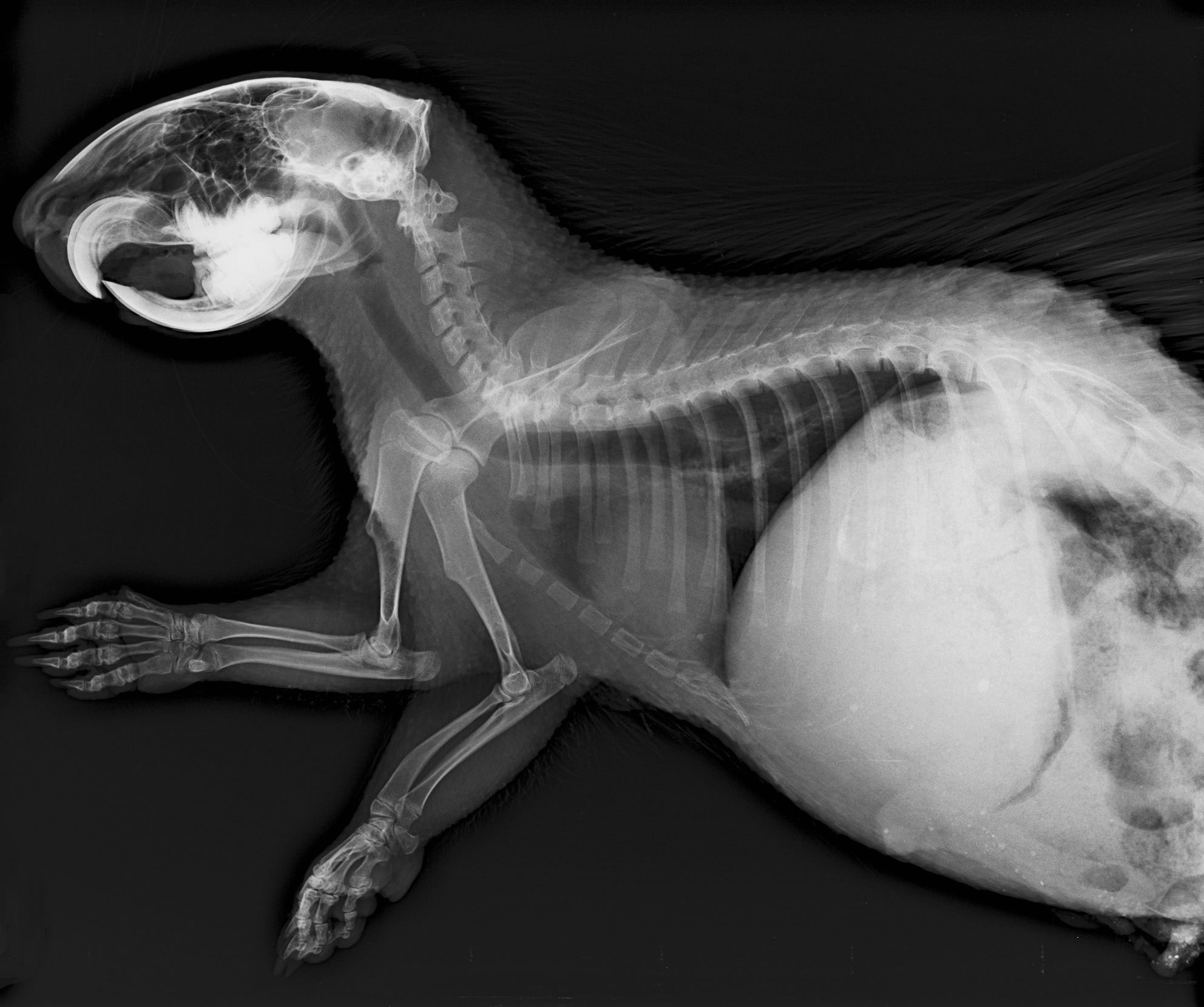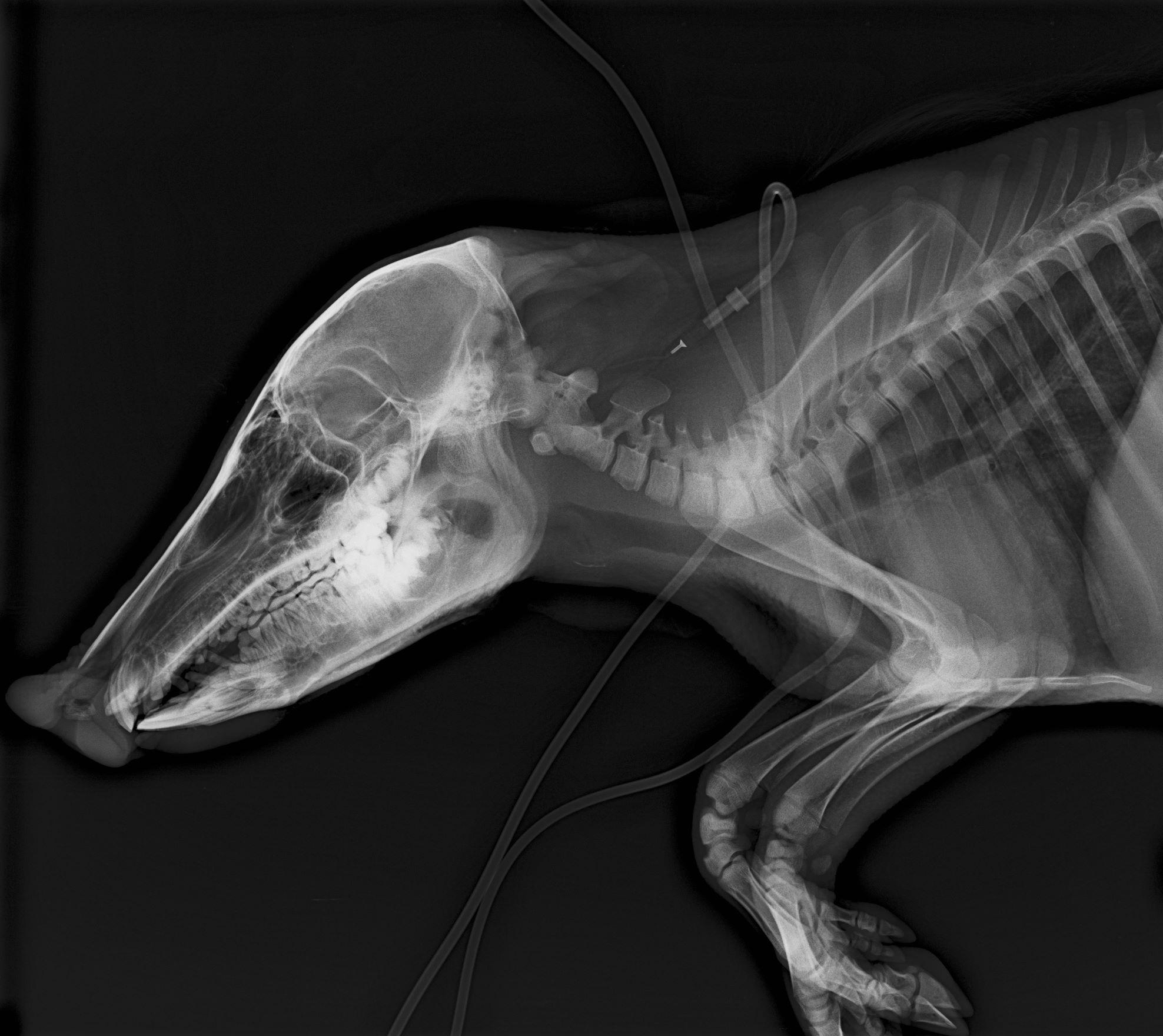Inner Beauty of Life Series: Mammals
Some injured and sick animals treated at the KFBG Wild Animal Rescue Centre receive radiographic examinations. The resulting X-ray images not only help provide detailed evaluation of the animal’s condition, but they can also be considered as quite artistic and provide a new and unique perspective of nature.
We will share X-ray images of rescued animals, and interesting stories about their anatomy and lifestyle in three individual blog posts.
First, we will look at some rescued mammals.
1. Chinese Pangolin
.jpg)
Instead of hair, pangolins have overlapping scales that protect most of their body (see the “spikes” that run all the way from head to tail in the X-ray image). The scales are believed to have unproven medicinal qualities and this has led to massive poaching and exploitation of pangolins, making them the most widely trafficked wild mammal in the world. In fact, the scales are made of keratin – just like our fingernails.
Pangolins feed on ants and termites. They use their long sticky tongues – longer than the length of their body – to lick up the insects. Since the pangolin has no teeth, it swallows the insects whole and relies on particles of sand in its stomach (the white cloudy mass in the middle of its body in the picture) to grind its food.
Note: The clips in the X-ray image are part of a medical equipment used to monitor the heart rate. And the cone over the animal’s face is an anaesthetic face mask.
.jpg)
Pangolins have extremely powerful front legs and sharp curved claws specialized for digging sleep burrows and breaking into ant and termite nests.
When they are searching for foraging sites on the forest floor, they curl their claws under their feet and walk on their knuckles.
Note: The clips in the X-ray image are part of a medical equipment used to monitor the heart rate.
.jpg)
Some pangolin species, including the Chinese Pangolin, possess a prehensile tail that helps them hang on to tree branches, holding their body weight as they manoeuvre above the ground.
2. Short-nosed Fruit Bat
.jpg)
Unlike birds, bats have no feathers. Their wings consist of soft and elastic skin membrane stretched between their elongated fingers and arms, just like an umbrella. Like other mammals, bats have five fingers and five toes. That’s why the order of bats is called Chiroptera, or hand-wing in Greek.
The wing structure gives them higher agility in flight. And the powerful muscles on the shoulder help produce the energy for flying.
Note: The cone in front of the nose in the X-ray image is an anaesthetic face mask.
.jpg)
Bats are the only mammal capable of true powered flight. Some mammals like flying squirrels glide from a higher branch to a lower branch, but bats can flap their wings to gain height and they can hover in flight.
Note: The cone in front of the nose in the X-ray image is an anaesthetic face mask.
3. East Asian Porcupine
Porcupines have oversized incisors and powerful jaws used for scraping bark and roots, and crushing seeds and nuts.
They also have long, sharp quills (see the faint strokes of hair on the porcupine’s back in the X-ray image). When porcupines feel threatened, they erect their quills into a crest and shake them to warn off attackers. Contrary to popular belief, porcupines cannot shoot their quills at attackers, although some may come loose in the shaking process.
4. Barking Deer
.jpg)
If you look closely at the Barking Deer’s mouth in the X-ray image, you will see that, unlike humans, they do not have any upper incisors and there is a large space between the lower incisors and cheek teeth. So how do they eat?
Barking Deer love eating fruits and leaves. They press their lower incisors against the hard palate on the roof of their mouth to rip their favourite food from trees, hold them in the gap before grinding their meal with their cheek teeth at the back of their mouth. This allows them to grab a good mouthful of leaves and retreat to safety in the forest while they digest their meal. The same skull structure is seen in their ruminant cousins – cattle and sheep.
Two teeth in the top jaw is developed into a tusk which it uses to defend itself just like a small knife.

Barking Deer are like ballerinas and walk on the tips of their toes. What you see here are the deer’s lengthened feet and heels. Only the toes ever touch the ground. The heel bones sticking out of the back of their feet never get in contact with earth. This evolution makes galloping and making sharp turns to get away from predators possible. It is the same in hoofed animals like pigs and horses.
.jpg)
This Barking Deer was found trapped in a water catchment on Lantau, rescued by the SPCA and sent to the KFBG Wild Animal Rescue Centre. Our rescue team was surprised to find that she was heavily pregnant. This demonstrates clearly the value of the veterinary X-ray images.
5. Wild Boar

With eyes located on the sides of the head, Wild Boar can see predators approaching from left, right and behind. And placing some distance between their snout and eyes aids the boar in maintaining all round vision while they are digging for worms, plant roots and tubers with their snouts.
Note: The tubes in the X-ray image were providing the animal under treatment with fluids to prevent dehydration.

